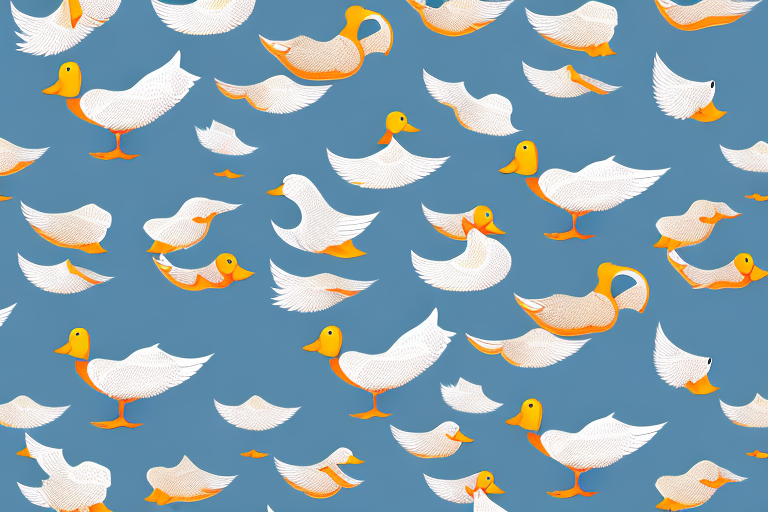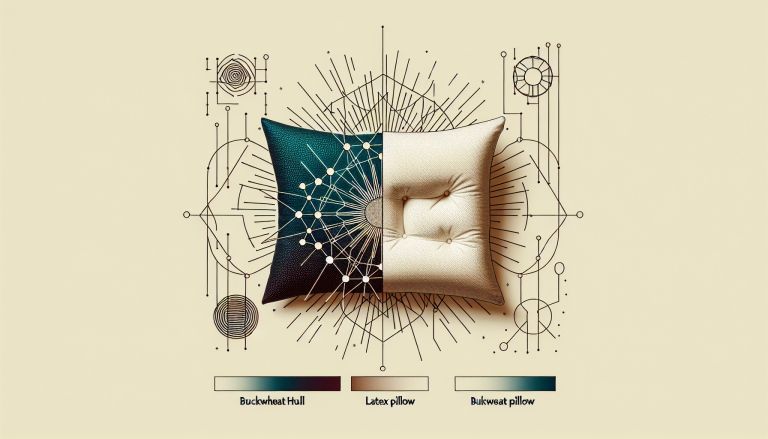Down is a popular material used in bedding and clothing for its unique properties. It is a natural insulator that provides warmth and comfort without adding weight. Duck and goose down are the two most commonly used types of down for bedding and clothing products. In this article, we will explore the benefits of duck and goose down and everything you need to know before making a purchase.
What is Down and How is it Collected?
Down is the soft layer of feathers found on ducks and geese. It is located underneath the outer feathers, close to the bird’s body. Down is collected during the molting season or after being processed for food. The down is cleaned and sanitized before being used in bedding and clothing products.
Down is highly valued for its insulating properties, making it a popular material for winter clothing and bedding. However, the collection of down has been a controversial topic due to concerns about animal welfare. Some companies have implemented ethical sourcing practices, such as using only down from birds that were not force-fed or live-plucked. Consumers can look for certifications, such as the Responsible Down Standard, to ensure that the down they purchase was obtained in a humane and sustainable manner.
The Differences Between Duck and Goose Down
The primary difference between duck and goose down is the size of the clusters. Goose down clusters are larger than duck down clusters, providing a higher fill power. Fill power is the measurement of the loft or fluffiness of the down. The higher the fill power, the more insulation the down provides. Goose down is generally considered higher quality and more expensive than duck down.
Another difference between duck and goose down is the source. Duck down is more readily available and therefore less expensive than goose down. However, goose down is often considered a more luxurious option due to its rarity and higher quality. Additionally, some people may have ethical concerns about using goose down, as it is often obtained from live-plucked birds. It is important to research and choose a reputable and ethical source when purchasing down products.
The Insulating Properties of Down
Down is an excellent insulator due to its three-dimensional structure. The clusters of down trap warm air, creating a barrier between the user and the cold. Down also regulates body temperature, keeping the user warm in cold temperatures and cool in warm temperatures. The insulating properties of down make it an ideal material for bedding and clothing products.
Furthermore, down is a sustainable and eco-friendly material. It is a byproduct of the food industry, as it is harvested from the feathers of ducks and geese that are raised for meat. This means that no animals are harmed solely for their down. Additionally, down is biodegradable and can be recycled, making it a more environmentally conscious choice compared to synthetic materials.
Another advantage of down is its durability. With proper care, down products can last for many years. Unlike synthetic materials, down does not lose its insulating properties over time. This means that investing in high-quality down bedding or clothing can be a cost-effective choice in the long run.
Why Down is a Popular Choice for Bedding and Clothing
Down is a popular choice for bedding and clothing products for its unique properties. It provides warmth and comfort without adding weight, making it ideal for duvets, comforters, and pillows. Down is also breathable, allowing for proper air circulation and reducing sweating. In clothing, down is used in jackets, vests, and sleeping bags for its insulating properties and lightweight.
Another reason why down is a popular choice for bedding and clothing is its durability. Down products are known to last for years, even with regular use. This is because down clusters are resilient and can withstand compression without losing their loft or insulating properties. Additionally, down is easy to care for and can be machine washed and dried without losing its shape or quality.
Furthermore, down is a sustainable and eco-friendly material. Most down used in bedding and clothing products is a byproduct of the food industry, meaning it is sourced from geese and ducks that are raised for their meat. This reduces waste and ensures that the entire animal is being used. Additionally, many companies are now using responsibly sourced down, which means the birds are treated humanely and not subjected to live plucking or force-feeding.
Eco-Friendly Alternatives to Down
While down is a popular choice for bedding and clothing, there are eco-friendly alternatives available. Some manufacturers use recycled down, which is made from post-consumer waste. Other options include bamboo, organic cotton, and hemp fillers. It is essential to research and choose products that fit your values and lifestyle.
Bamboo is a sustainable and eco-friendly alternative to down. It is a fast-growing plant that requires less water and pesticides than cotton. Bamboo fillers are also hypoallergenic and naturally antimicrobial, making them an excellent choice for those with allergies or sensitive skin.
Organic cotton is another eco-friendly option for bedding and clothing. It is grown without the use of harmful pesticides and chemicals, making it safer for farmers and the environment. Organic cotton fillers are also soft and breathable, providing a comfortable sleeping experience.
How to Choose the Best Quality Down Products
When choosing a down product, it is essential to look for specific qualities. The fill power is the most critical factor to consider, as it determines the warmth and loft of the product. Additionally, look for products with high thread counts, which make them more durable and long-lasting. It is also crucial to choose products from reputable manufacturers who use sustainable and humane practices.
Another important factor to consider when choosing a down product is the type of down used. Goose down is generally considered to be of higher quality than duck down, as it is larger and provides better insulation. However, duck down can still be a good option if it has a high fill power and is ethically sourced.
It is also important to properly care for your down products to ensure their longevity. Always follow the manufacturer’s care instructions, which may include washing in cold water with a mild detergent and tumble drying on low heat. Avoid using fabric softeners or bleach, as these can damage the down. Additionally, consider using a duvet cover or pillow protector to protect your down products from stains and spills.
Caring for Your Down Products: Cleaning and Storage Tips
Caring for down products is essential to maintain their quality and prolong their lifespan. It is recommended to wash down products no more than once a year using a mild detergent and cold water. Dry cleaning is not recommended as it can damage the down. Additionally, it is essential to store down products in a dry and well-ventilated area. Avoid compressing the products, as this can damage the loft and insulating properties.
It is also important to note that down products should be completely dry before storing them. Any moisture left in the down can lead to mold and mildew growth, which can damage the product and create an unpleasant odor. To ensure that the product is completely dry, it is recommended to use a dryer on low heat with a few clean tennis balls or dryer balls to help fluff the down. It is also important to periodically fluff and shake the product to maintain its loft and prevent clumping.
Common Misconceptions About Down and Their Truths
There are several common misconceptions about down that are worth addressing. One is that down products are not suitable for those with allergies, which is not entirely true. While some people may have allergic reactions to down, it is hypoallergenic and repels allergens. Additionally, down products are not always expensive, and there are high-quality products available at various price points.
Another common misconception about down is that it is not durable and will lose its loft over time. However, with proper care and maintenance, down products can last for many years. It is important to follow the manufacturer’s care instructions and avoid exposing the product to moisture or extreme heat.
Lastly, some people believe that down is only suitable for cold weather and cannot be used in warmer climates. This is not true, as down products come in different weights and can be used year-round. Lightweight down comforters and jackets are perfect for mild temperatures, while heavier options are ideal for colder weather.
The History of Using Down in Bedding and Clothing
The use of down in bedding and clothing dates back to ancient times. The Vikings used down-filled clothing to survive harsh winters, and Marco Polo wrote about the use of down bedding in China in the 13th century. Today, down is used in bedding and clothing worldwide, and its popularity continues to grow.
In conclusion, duck and goose down is a unique and versatile material with many benefits. It provides warmth and comfort without adding weight and is breathable and insulating. When choosing down products, it is essential to research and select high-quality and sustainable products. Proper care and storage will help maintain the quality and longevity of your down products for years to come.
One of the reasons for the popularity of down is its ability to regulate body temperature. Down traps warm air, creating a layer of insulation that keeps you warm in cold weather. However, it also allows air to circulate, preventing overheating and ensuring a comfortable sleep or wear experience.
Another benefit of down is its durability. With proper care, down products can last for many years, making them a cost-effective investment. Additionally, down is a renewable resource, as it is a byproduct of the food industry. This makes it an eco-friendly choice for those who are conscious of their environmental impact.








